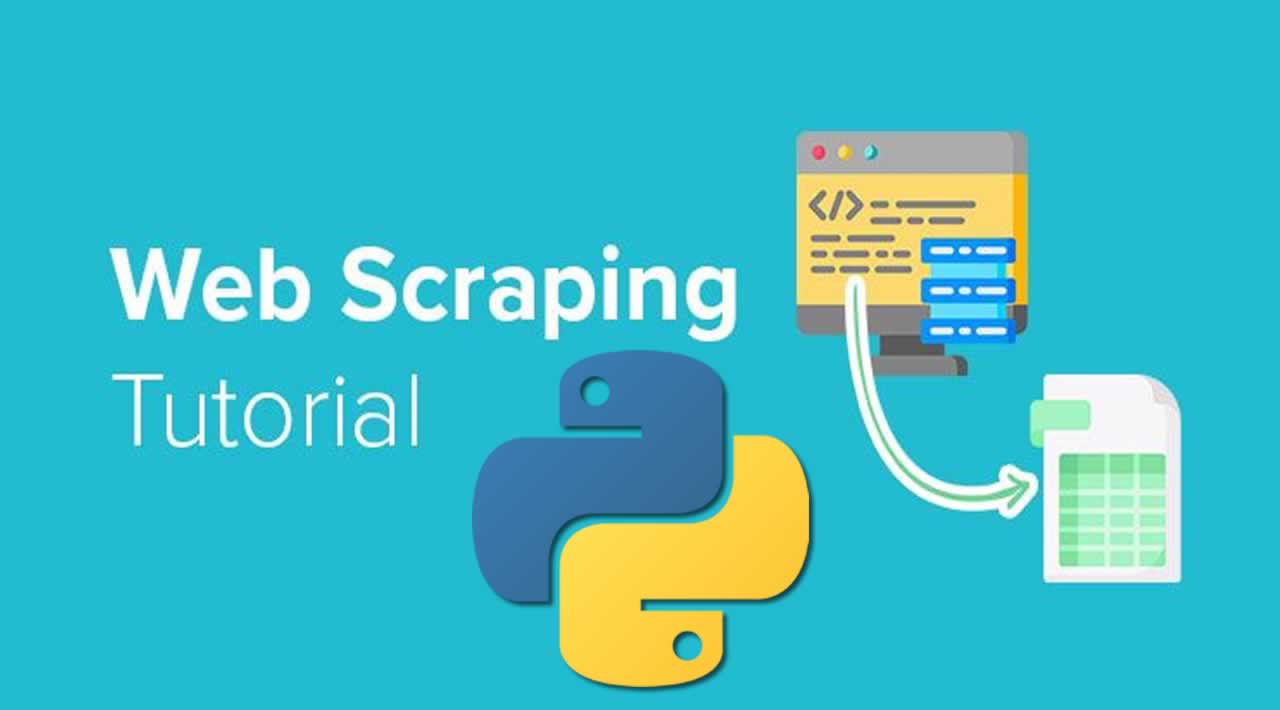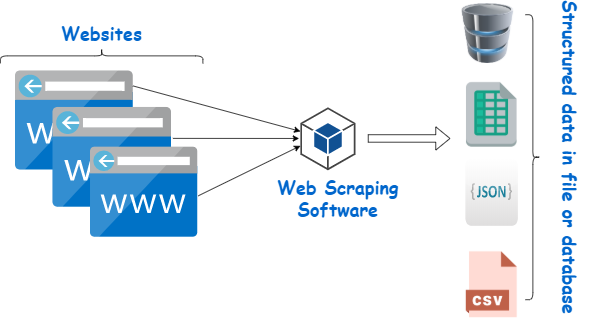- Web Scraping Tools
- Basic Web Scraping Python Libraries
- Python Web Scraping Pdf
- Basic Web Scraper Python
- Web Scraping Python Example
- What Is Web Scraping
However, if you want to learn Python or are new to the world of programming, it can be quite though getting started. There are so many things to learn: coding, object orienated programming, building desktop apps, creating web apps with Flask or Django, learning how to plot and even how to use Machine Learning or Artificial Intelligence. Manually Opening a Socket and Sending the HTTP Request. The most basic way to perform. So, the last step before performing web scraping methods is to understand a bit of the HTML language. HTML is, from a really basic point of view, composed of elements that have attributes. An element could be a paragraph, and an attribute could be that the paragraph is in bold letter.
- What this does: Scrapes pages to get alt tags and page titles, and saves as CSV
- Requires: Python Anaconda distribution, basic knowledge of Pandas and HTML structure
- Concepts covered: Basic scraper with BeautifulSoup, Scrape multiple pages, Loops, Export to CSV
- Download the entire Python file
Oct 22, 2015 Learn web scraping in Python using the BeautifulSoup library; Web Scraping is a useful technique to convert unstructured data on the web to structured data; BeautifulSoup is an efficient library available in Python to perform web scraping other than urllib; A basic knowledge of HTML and HTML tags is necessary to do web scraping in Python. Python is the most popular language for web scraping. It is a complete product because it can handle almost all processes related to data extraction smoothly. The reason why Python is a preferred language to use for web scraping is that Scrapy and Beautiful Soup are two of the most widely employed frameworks based on Python.
Python has a lot of great uses for marketers, and one of the coolest and most practical tools is a web scraper.
There are many situations where you may need to collect data quickly from a website and save into a usable format. One example is getting image alt or title attributes, which have value for SEO purposes.
Web Scraping Tools
In this post, we’ll create a simple web scraper in Python that will collect the alt attributes of images and the title of the page on which they appear.
The scraper uses a library called BeautifulSoup. For a full tutorial on using BeautifulSoup, I’d recommend this tutorial, which provides a really great explanation of how it works.
Getting started
First, we’ll import our libraries.
Next, we’ll generate the CSV file.
Next, we’ll define the URLs we want to scrape in a list.
Then, we’ll create a blank dataframe.


Conceptualizing data scraping
Our end goal for the data is to have two columns. The first column will have the page name and the second column will have the alt attribute. So, it should look a little something like this:
| pagename | alt |
| Blog Home | Computer screen |
| Blog Home | Pie chart |
| Portfolio | Mountains |
| Portfolio | Lake |
So, we can conceptualize the scraping process like this:
Scraping with BeautifulSoup
Because we’re going to be scraping multiple URLs, we’ll need to create a loop to repeat the steps for each page. Be sure to pay attention to the indents in the code (or download the .py file).
For the page title, we’ll want to scrape the H1 tag. We’ll use the find() function to find the H1 tag. We’ll print that information and also store it as a variable for a later step.

Next, we’ll scrape the images and collect the alt attributes. Because some images like the logo are repeated on every page, I don’t want to scrape these. Instead, I’ll use .find_all() and only return images with the class “content-header”. Once it finds the images, we’ll print the alt attributes.
Because there may be multiple images on the page, we’ll have to create another loop within the larger loop.
Here comes the cool part. We’ll create a variable defined as the alt attribute. Using this and the variable for the H1 tag we created earlier, we’ll couple these and append them to the dataframe. This step will be repeated each time the loop runs, so for every image on the page with the content header class.
Finally, we’ll save our dataframe to a CSV file.
Python makes it simple to grab data from the web. This is a guide (or maybe cheat sheet) on how you can scrape the web easily with Requests and Beautiful Soup 4.
Getting started
First, you need to install the right tools.
These are the ones we will use for the scraping. Create a new python file and import them at the top of your file.
Fetch with Requests
The Requests library will be used to fetch the pages. To make a GET request, you simply use the GET method.
You can get a lot of information from the request.
To be able to scrape your page, you need to use the Beautiful Soup library. You need to save the response content to turn it into a soup object.
You can see the HTML in a readable format with the prettify method.
Scrape with Beautiful Soup
Now to the actual scraping. Getting the data from the HTML code.
Using CSS Selector
The easiest way is probably to use the CSS selector, which can be copied within Chrome.
Basic Web Scraping Python Libraries
Here, I have selected the first Google result. Inspected the HTML. Right clicked the element, selected copy and choose the Copy selector alternative.
The select element will, however, return an array. If you only want one object, you can use the select_one method instead.

Using Tags
Python Web Scraping Pdf
You can also scrape by tags (a, h1, p, div) with the following syntax.
Basic Web Scraper Python
It is also possible to use the id or class attribute to scrape the HTML.
Using find_all
Another method you can use is find_all. It will basically return all elements that match.
You can also use the find method, which will return a single element instead of an array.
Web Scraping Python Example
Get the values
The most important part of scarping is getting the actual values (or text) from the element.
Get the inner text (the actual text printed on the page) with this method.
What Is Web Scraping
If you want to get a specific attribute of an element, like the href, use this syntax:
